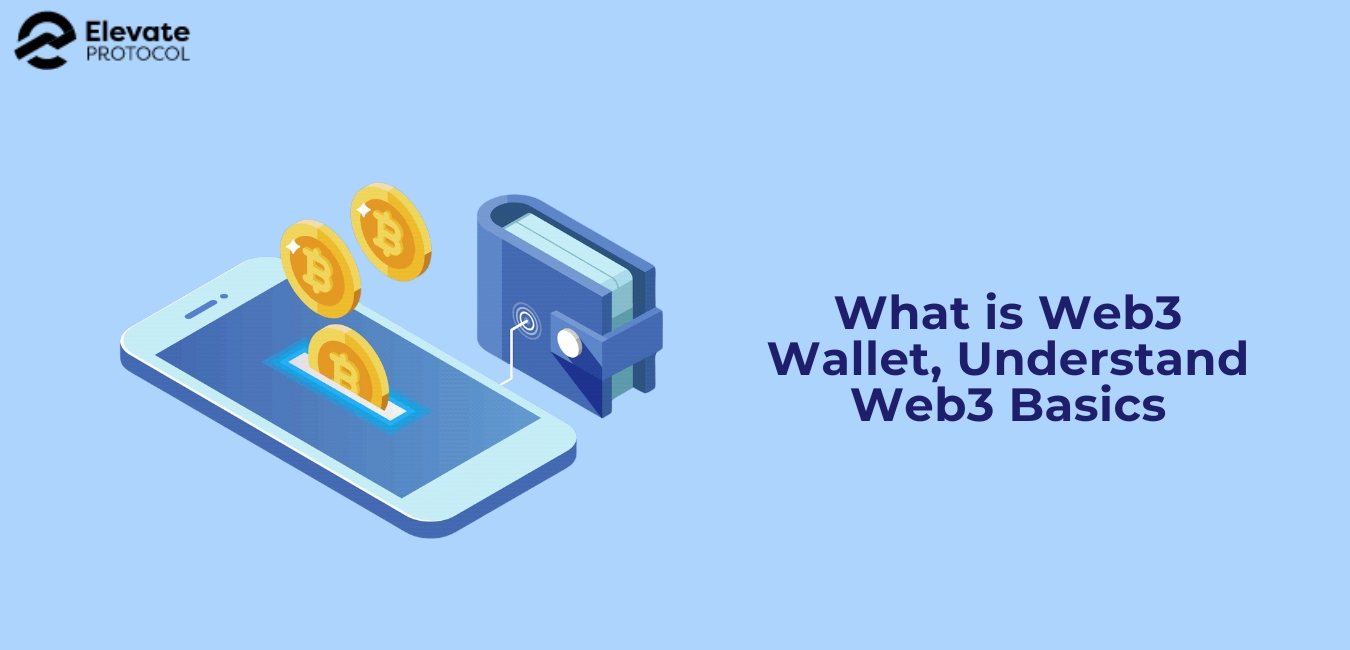
In the ever-evolving landscape of the internet, the term “Web3” has been gaining traction, promising a decentralized and user-centric online experience.
Central to this paradigm shift is the concept of Web3 wallets. Elevate Protocol reshaping the landscape of web3 asset management on the blockchain with its forward-thinking approach.
In this blog post, we’ll delve into the fundamentals of Web3 and demystify the role of Web3 wallets in reshaping the digital realm.
Web3
To understand the significance of Web3 wallets, it’s essential to grasp the broader concept of Web3 itself. The term “Web3” refers to the third era of the internet, following the static web (Web1) and the dynamic, interactive web (Web2).
Unlike its predecessors, Web3 is characterized by decentralization, interoperability, and enhanced user control. Web3 envisions a digital landscape where users have ownership and control over their data.
Eliminating the reliance on centralized entities. It leverages blockchain technology and decentralized protocols to create a more transparent, secure, and inclusive internet.
Web3 Wallets
At the heart of the Web3 revolution are wallets designed to interact seamlessly with decentralized applications (DApps) and manage digital assets. These wallets are aptly named Web3 wallets, and they play a pivotal role in empowering users within the decentralized ecosystem.
A Web3 wallet serves as a user’s gateway to the decentralized web, allowing them to securely store private keys, manage various cryptocurrencies, and interact with DApps.
Unlike traditional wallets associated with centralized platforms, Web3 wallets give users complete control over their information, ensuring privacy and security.
Key Features of Web3 Wallets
Decentralized Identity
Web3 wallets enable users to create and manage decentralized identities. These identities, often represented by cryptographic keys, grant users control over their personal information and online interactions.
Interoperability
Web3 wallets are designed to be interoperable, allowing users to seamlessly switch between different DApps and blockchain networks. This interoperability is a key feature of the decentralized web, fostering a more fluid and connected user experience.
Secure Asset Management
Users can securely store a variety of digital assets, including cryptocurrencies, non-fungible tokens (NFTs), and other blockchain-based assets, within their Web3 wallets. The private keys associated with these assets are stored locally on the user’s device, enhancing security.
User Control and Privacy
Unlike centralized services that often monetize user data, Web3 wallets prioritize user control and privacy. Users retain ownership of their data and have the choice to share specific information with DApps on a need-to-know basis.
Getting Started with a Web3 Wallet
Now that we’ve explored the fundamental concepts of Web3 and Web3 wallets, let’s walk through the basic steps to get started with a Web3 wallet.
Choose a Wallet
Select a Web3 wallet that aligns with your preferences and requirements. Consider factors such as supported blockchains, user interface, and security features.
Install or Create
Depending on your chosen wallet, either install the browser extension, download the mobile app, or set up a hardware wallet. Follow the on-screen instructions to create a new wallet or import an existing one if you already have a seed phrase or private key.
Secure Your Wallet
Take necessary precautions to secure your Web3 wallet. This includes setting up strong passwords, enabling two-factor authentication, and safely storing your seed phrase or private key offline.
Explore DApps
Once your wallet is set up, start exploring decentralized applications. These can range from decentralized finance (DeFi) platforms to NFT marketplaces and more. Most Web3 wallets have a built-in DApp browser or provide easy integration with popular DApps.
Manage Your Assets
Use your Web3 wallet to manage your digital assets. Send and receive cryptocurrencies, participate in token swaps, and interact with smart contracts. Your wallet serves as a versatile tool for navigating the decentralized web.
Challenges and Future Developments
While the Web3 movement holds immense promise, it’s not without its challenges. Issues such as scalability, user experience, and regulatory uncertainties continue to be addressed by developers and the broader community.
As the technology matures, we can expect further advancements in Web3 wallets, making them more user-friendly and accessible to a wider audience.
The future of the internet is undeniably intertwined with the principles of Web3, and Web3 wallets serve as the gateway for users to embrace this decentralized era fully.
As blockchain technology continues to evolve, so too will the capabilities and features of Web3 wallets, shaping a digital landscape where users have unprecedented control over their online experiences.
Conclusion
Understanding what a Web3 wallet is involves grasping the broader context of Web3 and its implications for the future of the Internet.
Web3 wallets empower users to navigate the decentralized web securely, providing a means to manage digital assets and interact with a variety of decentralized applications.
Whether you’re a crypto enthusiast, a developer exploring DApps, or simply curious about the evolving internet landscape, embracing Web3 and Web3 wallets opens doors to a new era of online possibilities.
As we continue to witness the transformative impact of decentralized technologies, Web3 wallets stand as key tools in the hands of users, offering control, privacy, and a glimpse into the decentralized future of the internet.
Read More: How to Invest in Web3: A Beginner’s Guide